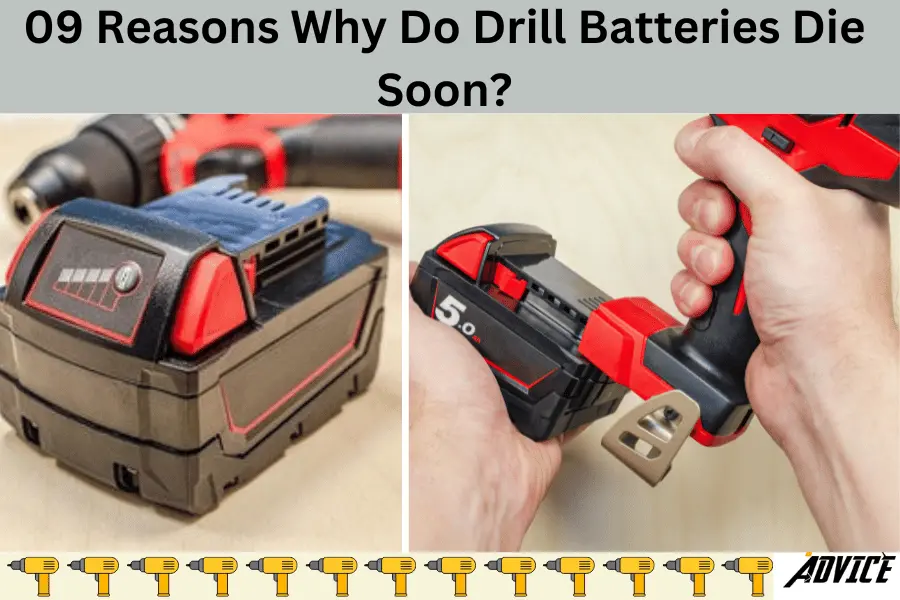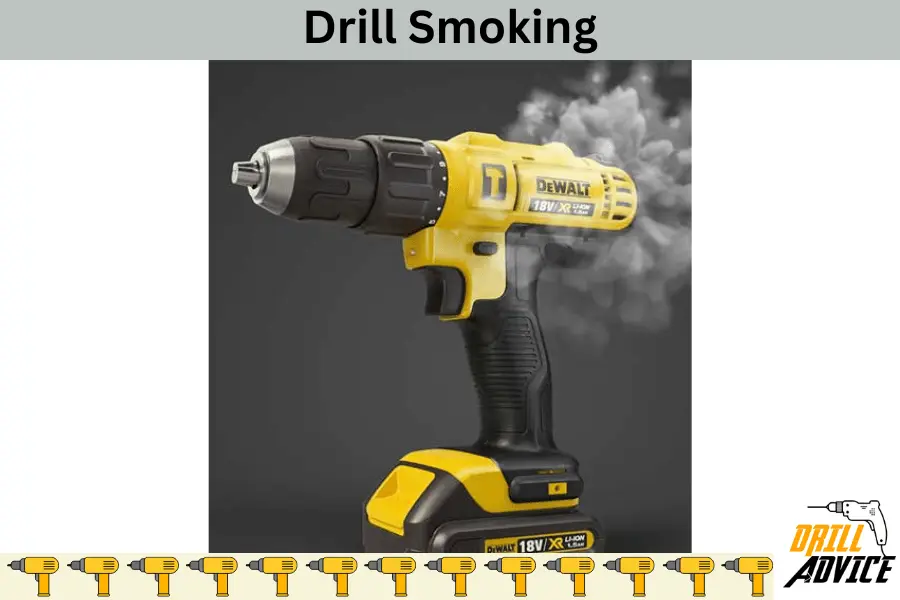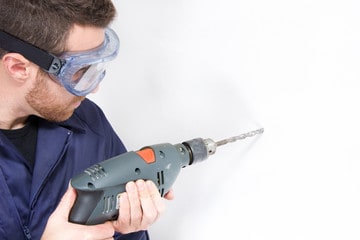
The technical definition of the drill battery dying is voltage(V) becomes zero and capacity(Ah) becomes zero of the drill battery. A dead drill battery is not able to hold the voltage as well as unable to charge using a regular charger. You can indicate the dead drill battery by multimeter, not powering up the tool, not charging, battery switch is not working, has a rusting terminal, and the battery can be rusting.
A drill battery can die due to use in higher temperatures, use with an incompatible charger, use in the wrong tools, use for overloaded tasks, continuous usage, and inside current short. A dead drill battery can get life by jumpstarting it. You can use a drill battery for about 2-3 years until it’s 1000 charging cycles over. If the drill battery is dead at any time, you can use the drill battery by interchanging it using an adaptor.
What is the Technical Definition of Drill Battery Dying?
The technical definition of the drill battery dying is voltage(V) becomes zero and capacity(Ah) becomes zero of the drill battery. It typically means that the battery has lost its ability to hold a charge. This can sometimes occur due to old age, overuse, or a fault within the battery itself. It’s characterized by a substantial decline in the runtime of the drill, up to a point where the battery is no longer able to power the drill at all.
How to Indicate a Dead Drill Battery?
A dead drill battery can be indicated by its visibility, equipment testing and using with a charger. Below are the signs of a dead drill battery. When you see one of the below signs you should revive or replace drill battery,
6 Signs of a dead drill battery
- Dead drill battery shows zero on the multimeter
- Dead drill battery does not power the tool
- Dead drill battery is not charging
- Dead drill battery switch is not working
- Dead drill battery has a rusting terminals
- Dead drill battery can rust
What are the 9 Reasons for Drill Battery Dying?

1. Use in Higher Temperature Areas
When a Li-Ion drill battery is using more than 40°C (105°F) areas, heat accelerates its chemical reaction inside the battery. Specifically, high heat accelerates the breakdown of the lithium-ion electrolyte. It causes the battery to lose the ability to retain a charge over time.
As a result of this, the battery tends to self-discharge quickly, tends to deep discharge the battery. In some instances, it could also cause the battery to swell as gases build up inside. This causes to reduction the performance and the durability of the drill battery.
Solution
- Do not use drill batteries in high-heat areas.
2. Using an Incompatible Charger
The drill battery consists of small rechargeable Li-Ion cells. Those cells have 3.7 nominal voltage. These cells need 4.3 charging voltage and 0.3A-3A charging voltage. When you use an incompatible charger for charging a drill battery its voltage can be more than the required value.
If the voltage is more than the Li-Ion cell’s required value (4.3V), It can cause to drill battery to overheat. It can damage the internal components of the battery. This can cause the capacity of the battery to decrease, leading to a decrease in the drilling power and operational time of the drill.
If the charger delivers a higher current also overheats the drill battery. Due to the higher current, the battery inside can be heated and damaged.
If the charger delivers a voltage or current lower than the battery needs (e.g., using a 12V charger for an 18V battery), the battery will not charge properly or even at all. This would result in under-charge. It lead to reduced drill performance.
Solution
- Use the recommended voltage and current for charging the battery.
3. Use in the Wrong Tool

The drill battery dies quickly when it is used in a higher voltage tool than the drill battery voltage (12V battery in 18V drill). When a lower voltage is used in a higher power tool, it tends to gain all of the power quickly. As a result of this drill, batteries tend to overheat. When this is prolonged, its performance and lifespan will be reduced
When a higher voltage battery is used in the lower voltage drill (18V battery in 12V drill), it tends to burn the motor windings due to high voltage differences. Hence, you should not misuse the drill battery with other power tools.
Solution
- Battery voltage and tool voltage should be compatible.
4. Use For Over Loaded Tasks
When we use a drilling tool in a higher workload, the drilling machine requires more power according to the combination of torque and angular velocity (P = T ω). When torque is increased, RPM is reduced, and when RPM increases, torque is reduced due to constant power. To produce this, the drill battery needs to discharge rapidly.
A rapid discharge in the drill battery produces more heat. When this happens, the drill battery tends to die quickly. There is a recommended Torque and RPM. We should use drill within the recommended RPM and torque always to prevent this.
Solution
- Use Under the recommended Torque and RPM.
5. Continous Usage
A continuously used drill battery can be dead due to rapid charging and discharging. When you use a single drill battery, you have to recharge it every 30 minutes. Because a drill battery can be used for about 15-30 minutes with loaded conditions. So this will reduce the charging cycles. When the charging cycles are reduced, the drill battery can die quickly. This causes to overheat the drill battery, and the final result will be a dead drill battery.
Solution
- Use a capacity battery with the same voltage.
6. Inside Current Short
A drill battery has two terminals. Positive (B+) and Negative (B-) are them. These terminals can be short due to pins, nails, paper clips, or any electric conduction material in the environment or in the toolbox. As a result of this drill battery will be discharged quickly. When this is prolonged, the battery can be dead easily.
- Do not store with conductions such as wires, nails, pins etc.
How to Live a Dead Drill Battery?
When a drill battery is not in use for a long period, it can be dead. A dread drill battery is not able to charge using a regular charger. In order to prevent this, you should jumpstart it.
A dead drill battery can go live by reviving it. In order to jumpstart a drill battery, you will need a fully charged same-voltage drill battery and conduction wire. You should connect similar terminals using conduction wire and then keep about 5-10 mins. After 5-10 mins, you can have a charged battery, and it can charge using the charger continuously.
How Long Can You Use a Drill Battery?
A well-maintained drill battery can be used for about 2-3 years until it consumes all of its 1000 charge cycles. After the charging cycles are over, it will not charge properly and discharge quickly.
Can I Use the Drill Battery by Interchanging it?
Yes, you can use a drill battery by interchanging using an adaptor. But this is only recommended for the same voltage batteries only.

